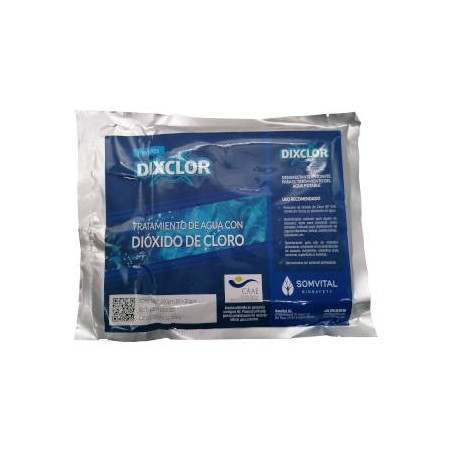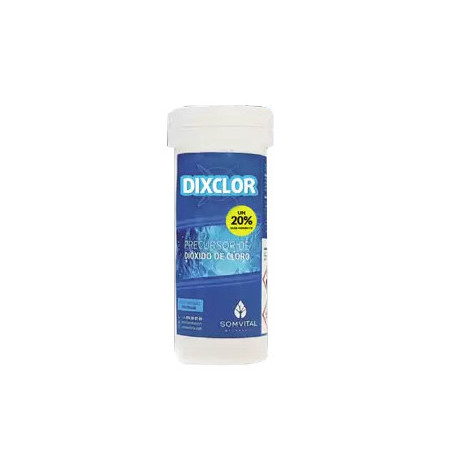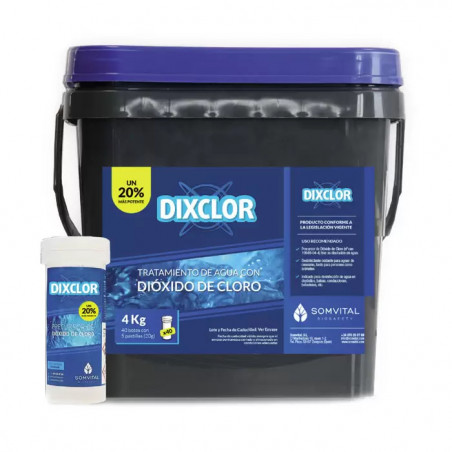Water is a very important nutrient for weaner pigs, as it is the fuel of many functions that are essential to life. Lack of this "forgotten" nutrient can result in reduced food consumption, reduced performance and increased health problems.
Water consumption can be affected by a number of factors. Definition of water requeriments for weaners is particularly difficult, since they often use it for playing, and not just to meet their hydration needs (Beltrán-Rosas And Jacho-López 2015).

Water consumption vs. feed consumption ratio
Average water consumption during first week post-weaning shows a 4:1 ratio (water:food; litres/pig/day), which changes to 3.2:1 on the second week, 3:1 on the third week, and 2.8:1 on the fourth week postweaning (García-Manzanilla and Gasa, 2006). Some studies indicate that water consumption can be predicted based on dry matter consumption using the following equation, very close to the rule of thumb of a 3:1 ratio (Magowan et al., 2007).
Water consumption (litre / day) = 0.14 + (3.053 × food consumption, kg / day)
Pig feed intake is determined by the amount of water they drink (Quiles, 2006b; Meiszberg et al., 2009; Kruse et al., 2011) and not the other way round, both actions being part of the ingestive behaviour. 75% of water drank by pigs is ingested just before, during or after eating (Quiles, 2006b; Meiszberg et al., 2009). Increased visits to the water source have been shown to correlate with increased time spent on food-related activities, which translates into higher Average Daily Consumption (ADC) and Average Daily Gain (ADG), especially for grower- finisher pigs (Meiszberg et al., 2009).(NRC, 1998)
Water flow rate vs. feed intake
In order to improve consumption, drinkers must be reviewed daily, checking the water flow (Table 1), and making sure the drinkers are not clogged. If the flow rate is too low, the weaners will leave the drinker before satisfying their daily needs (Wilcock, 2009).
Table 1. Effect of drinking water flow on Average Daily Consumption (ADC) and Average Daily Gain (ADG) in weaner pigs.
| Flow rate (ml/min) | ADC (g/day) | ADG (g/day) |
| 180 | 300 | 210 |
| 300 | 320 | 230 |
| 450 | 340 | 250 |
| 700 | 350 | 250 |
Source: Quiles (2006).
Drinker Types
Nipple drinker

Position and angle should be considered for nipple drinkers (Babot, 2008) (Wilcock, 2009; Beltrán-Rosas y Jacho-López 2015).
Picture 1 shows an incorrect angle and picture 2 the correct angle (Wilcock, 2009; Beltrán-Rosas and Jacho-López 2015).

Picture 1. Nipple drinker- incorrect angle. Nipple drinkers should allow the piglet to drink raising its head slightly. Courtesy from: Beltrán-Rosas.
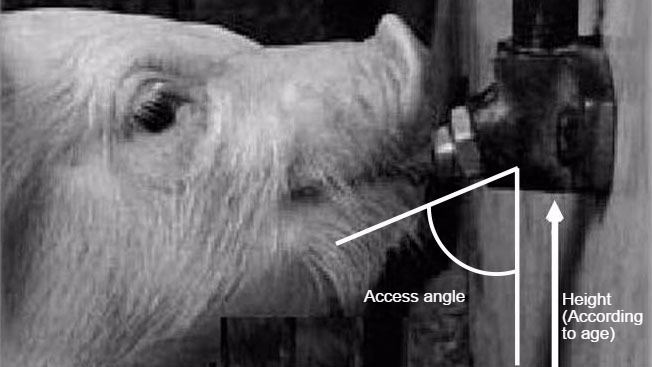
Picture 2: Drinker height and angle are most important design features. Pipe diameter, pressure and valve system will determine water flow. Modified from Ruiz and Manteca (2004); Santomá and Pontes, (2006).
A drinker cleaning (Mateos et al., 2000, Carr, 2000) and maintenance (Quiles and Hevia, 2004) routine, together with appropriate location of water points in the pen (Mateos et al. 2000) are also important. In order to facilitate access to water, the height of the drinkers should be adjusted to the animals' height (Beltrán-Rosas and Jacho-López 2015). These measures will help us improve water consumption, reducing waste to a minimum.
Nipple drinkers with incorrect angle causing higher water waste
Bowl drinker
The use of bowl drinkers ensures better water consumption, thus maintaining the level of food consumption and reducing water waste (Wilcock, 2009). It has been suggested that bowl drinker height should be 40% of the smallest piglet height (figure 3) (Gonyou, 1996; Wilcock, 2009), thus allowing the piglet to lower its head slightly. If the bowl is placed too high, the piglets will bite the edge; If it is too low, this increases the risk of the bowl drinker getting dirty (figure 4).
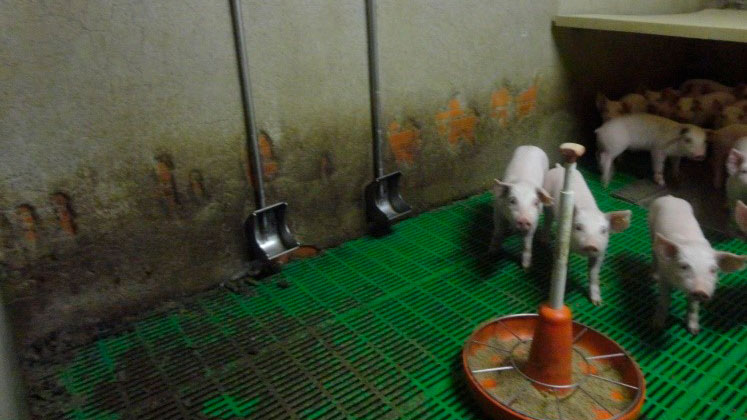
Picture 3: Bowl drinker. Its main advantage is the reduced water waste, which helps reduce slurry production. On the other hand, correct placement is essential to avoid them getting excesively dirty.
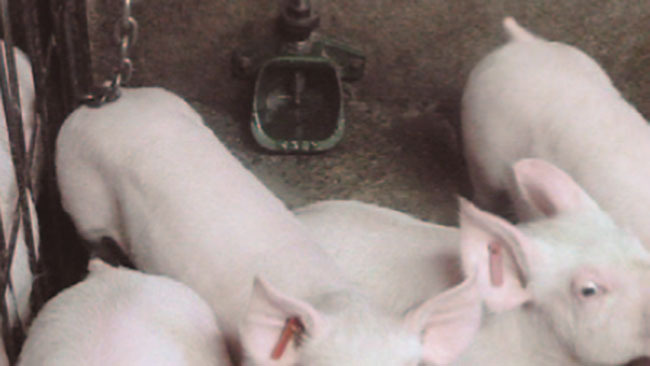
Picture 4: Bowl drinker at a low height
Water Quality
Water quality is very important, so physicochemical and microbiological analysis of water should be carried out at least every three months, testing for problem-causing minerals, such as sulphates, iron, nitrates, etc.
Water should be free of contaminants. It is considered that the quality of this nutrient should be similar to the standards recommended for humans (Table 2) (García et al., 2012). In addition, preventative treatments for drinking water should be applied, such as chlorination, peroxide use, filtration, etc. (Quiles, 2007).
Table 2. Guide to water quality for swine.
| Minerals mg l-1 | Acceptable limits | Other contaminants | Acceptable range |
| Calcium | 0-1000 | Total dissolved solids | |
| Aluminium | 5,0 | (TDS) | 0-3000 ppm |
| Arsenic | 0,5 | Nitrates | 0-100 ppm |
| Berillyum | 0,1 | Nitrites | 0-10 ppm |
| Boron | 5,0 | Sulphates | 0-1000 ppm |
| Cadmium | 0,02 | pH | 6-8 |
| Chromium | 1,0 | ||
| Cobalt | 1,0 | ||
| Fluorine | 2,0 | ||
| Lead | 0,1 | Microbiology | |
| Mercury | 0,003 | Total bacterial count | |
| Molybdenum | 0,5 | (CFU) | 0-1000 ml-1 |
| Nickel | 1,0 | Coliforms (CFU) | 0-50 ml-1 |
| Selenium | 0,05 | Escherichia coli (CFU) | 0/100 ml |
| Uranium | 0,01 | Enterococcus spp (CFU) | 0/100 ml |
| Zinc | 50,0 | Clostridium perfringens (CFU) | 0/100 ml |
Source: García et al, (2012)
Water requirements for pigs are not easy to quantify, not only because of the difficulties inherent to research itself, but also due to the number of factors affecting water consumption. The most important factors are mentioned in Figure 1.
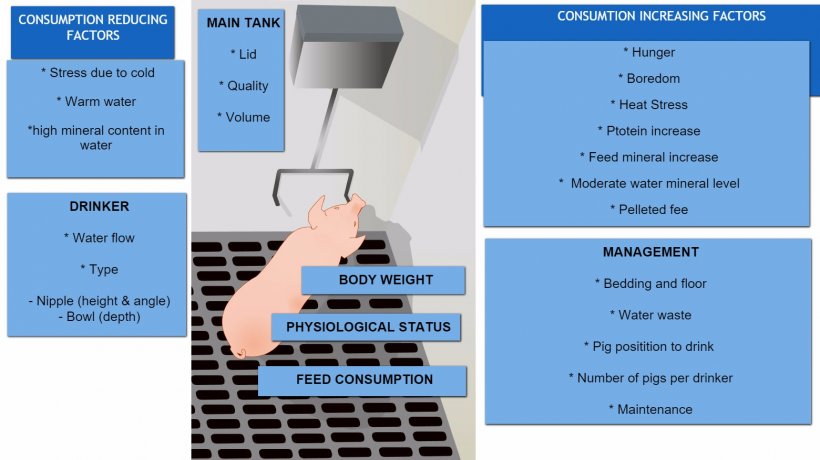
Factors affecting pig water consumption
In summary, ensuring that piglets have water is not enough.
In order to achieve a good feed intake, adequate water consumption is essential. This will only be achieved if pigs are provided with systems that allow them an easy access to adequate quality water






